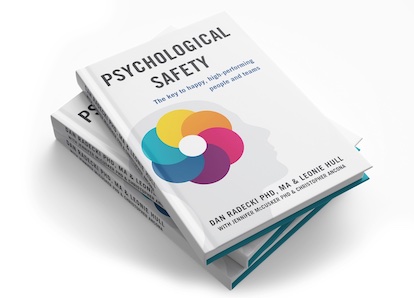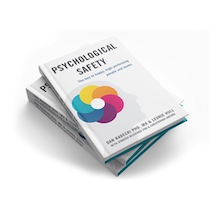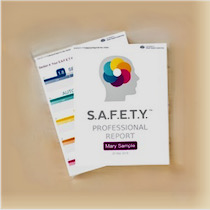Tom knew things would get ugly if he questioned the approval stage in the new workflow process. His manager stared at Tom, sighed and jotted something down. “Head Office are going to chew us up over this” she said. “Another nail in our coffin” she said quietly. “This rookie mistake should never have happened and it cannot delay roll-out” she said sternly. “I need you guys to fix this. Make this your number one priority and do whatever it takes to get it sorted. Why didn’t we spot this sooner? What a disaster”. Everyone looked down, busily writing in their notebooks.
“Thanks for that Tom. That’s my weekend ruined” sniped Susan as they were leaving the meeting room. “Why is it always you who finds the problems Tom?” muttered Jack. “Well that’s our metrics blown for this quarter” mumbled Gemma.
Tom slumped back at his desk, dejected. He didn’t write the stupid process. From now on he decided, he would keep his mouth shut and his head down in meetings. Just show up and do his job, like his colleagues seemed to. Someone else could get the blame for finding the problems. There was talk of yet another reorganisation. Would he have to reapply again and which ‘colleague’ would he be up against this time? A title of troublemaker wouldn’t help him. It was all so exhausting. A headache was starting.
18 months later the company suffered a major system outage, impacting service for 24 hours. The company’s brand and share price took a major hit.
Psychological safety is the sense that when you offer up your thoughts, ideas and questions or you highlight mistakes, you will still be accepted and respected
Meanwhile at a meeting across town
Emma took a deep breath and blurted out. “I think the approval step in the new process could mean we can’t hit our SLA. Perhaps we should review it?”. She avoided everyone’s eyes, not knowing how her new team would react. Jim her manager, sighed. “This is the last thing I wanted to hear, but good catch Emma. That’s exactly why we need you on this team”. Sophie who was sitting opposite, rolled her eyes, but then smiled and gave a little wink. Charlie gave a tiny thumbs up sign. “Listen up. Mistakes happen when there’s so much going on. No-one is to blame here. The important thing is that we fix the process now at this stage. What’s everything’s thoughts on how to do this? Sophie start us off. What do you think? …” The ideas soon began to flow.
Emma returned to her desk smiling. Her shoulders relaxed. She felt unusually connected to this new group. They seemed to ‘get her’. Maybe this was a team where she really could make a difference.
What is Psychological Safety?
According to the saying; ‘Diversity is like being invited to the party, Inclusion is like being invited onto the dance floor and Belonging is dancing like no-one is watching’. We could substitute the word Belonging for Psychological Safety.
Psychological safety is the sense that when you offer up your thoughts, ideas and questions or you highlight mistakes, you will still be accepted and respected. You can speak up without fear of rejection, ridicule or impact to your self-image, status or career. You feel others have your back and you are safe to show more of who you really are.
Working in a psychologically safe environment means you don’t need to juggle two versions of you; the work you and the real you. The real you can show up to work. No masks, no facades, no surface acting necessary. And that can free up a wealth of mental energy.
Tom’s environment clearly wasn’t psychologically safe. Likely there was blame, finger pointing, competitiveness and colleagues spending time and energy covering their own backs, rather than focusing on the customer and solutions. Effective collaboration might have been a challenge. Tom’s brain was probably in a threat state frequently
Future generations may be astonished that we worked with such little consideration to social threats and the mind at work
Any time your brain feels threatened in some way, capacities such as thinking, planning, creativity, decision-making and emotional control can all be reduced in an instant. From fuzzy thinking at one extreme, to rational thought going off-line at the other, with primitive emotional responses taking over
If you’ve been put on the spot whilst presenting or during a challenging discussion and your mind, speech and intellect seems to have frozen, then you’ve experienced your brain going temporarily off-line, in response to a real or perceived threat
What are social threats?
Tom wasn’t facing a physical threat though, such as a sudden noise or a snake. Instead he was facing the insidious, but all too common social threat; a comment, a look, your manager frowning, an implied insult in a message or email. According to recent advances in neuroscience, social threats may go deeper emotionally and last longer than a physical punch. It’s hard to recall the pain of stubbing your toe last week but it’s easy to recall the pain of humiliation when your manager gave you ‘that’ feedback or the anger you felt when your colleague took credit for your idea
In psychologically unsafe environments, where social threats are rife, brains are more likely to be vigilant, on high alert, looking out for the danger. Although threats manifest below our conscious awareness, what we may be aware of is a general unease or underlying tension, a slight anxiety, difficulty in relaxing, irritability, tension headaches, stomach issues, diminished self-control etc. We normally call this stress. And sometimes it only takes a small social threat, but one that’s quite particular to us, to start the ball rolling.
If we add internal threats into the mix too; that inner voice of criticism, telling you all manner of compelling, but false statements, about your abilities and qualities, then we have a recipe for mental health issues.
We undoubtedly have policies to minimise discrimination in gender, age, race etc, but do we have policies that support differences in neuro diversity?
The Academy of Brain-based Leadership’s S.A.F.E.T.Y™ Model, based on recent findings in neuroscience that highlights the main drivers or causes of social threat (or rewards) to the brain.
Each of us will be impacted by any of these elements, but we will all have our own sensitivities. My buttons may get pressed quicker and harder to a perceived threat to my sense of Autonomy. Yours perhaps to your sense of Security. Understanding your own S.A.F.E.T.Y™ profile is a first step in self-awareness. Understanding your colleagues, is the next!
________________________________
Debbie Jeremiah is Chief Thinking Officer at ThinkingSpace.training and delivers support, workshops and webinars on Psychological Safety & Belonging for leaders.
S.A.F.E.T.Y.™ is reproduced with the kind permission of the Academy of Brain-based Leadership at brainleadership.com
To better understand what drives your brain, take the free S.A.F.E.T.Y.™ assessment
*This is the writer’s opinion and does not form part of any professional assessment or evaluation













